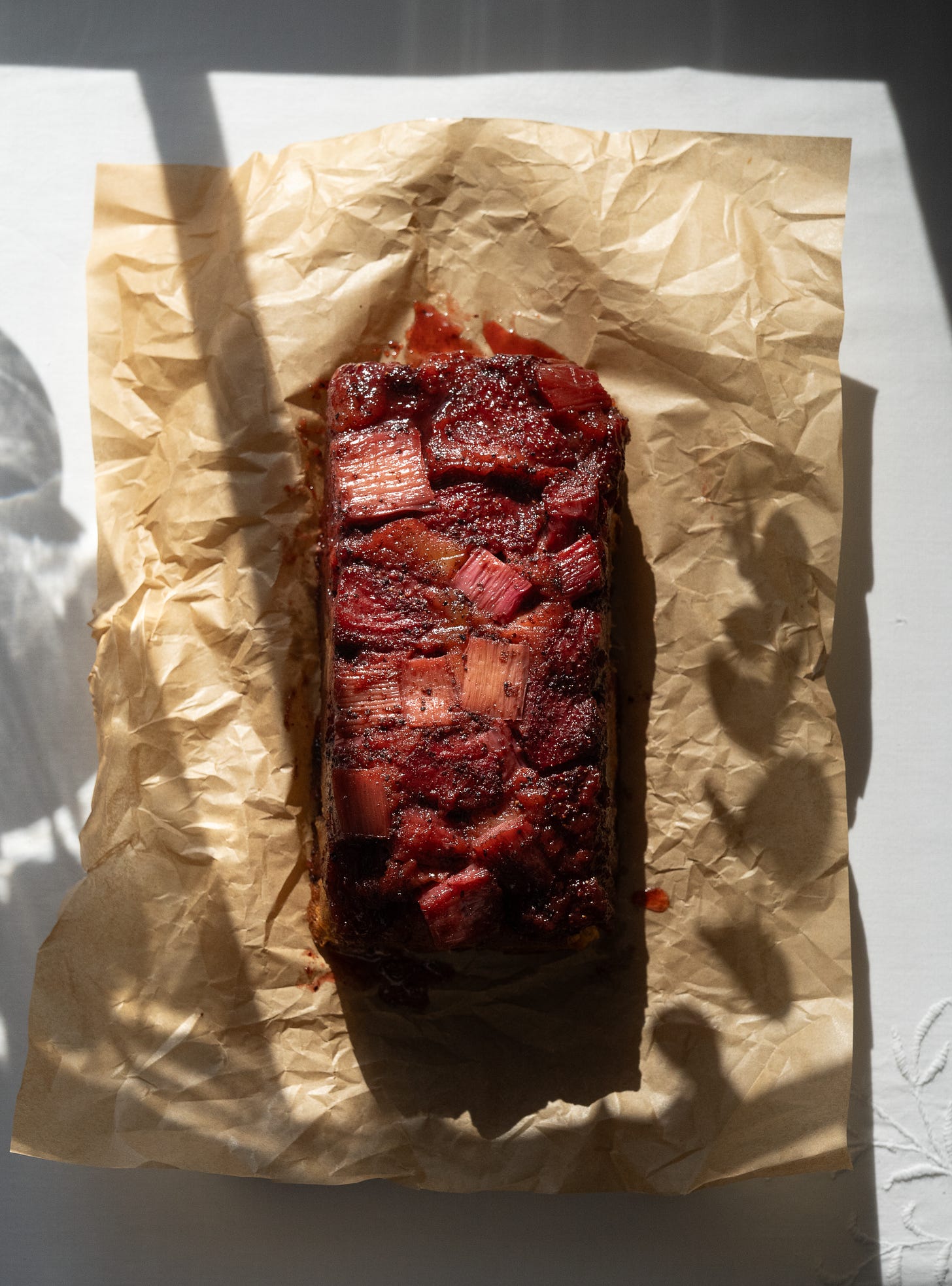Happy Easter! I spotted them at this week’s farmers’ market— an abundance of early spring-grown British strawberries. Not those pale, anemic imposters that travel too far, losing their souls somewhere along the way. These were the real deal: scarlet, sun-kissed, and sweet enough to make you pause. This bountiful harvest - the result of the recent warm, dry growing conditions - was a gift I couldn’t ignore, so I immediately bought two punnets.
My husband and I have a few days left in England before we head back to California. It's also the last week I’ll spend here with my parents until winter.
Back in August, my dad was diagnosed with cancer. I mentioned it in a previous newsletter, but didn’t say much more. Anyone who’s lived through illness - or stood beside someone in its grip - knows how it goes. The unknowns. The sharp turns. The strange stillness of hospital corridors. It’s been the hardest time in our family’s life.
This week, however, a little light broke through. After months of treatment, my dad returned from an appointment with his consultant with the kind of news that makes you exhale, even though you were unaware that you’d been holding your breath. He’s technically in remission. His condition (multiple myeloma) isn’t curable, but it’s treatable. And right now, he’s doing well. Remarkably well, all things considered.
This is a rather long post, so if your email cuts out, you can view it in full on the website or app
In our family, we mark everything - grief, joy, and all the strange, quiet moments in between - with cake. My dad’s always had a sweet tooth (especially for English strawberries), so I baked - something simple and celebratory, full of the things he loves.
Alongside the early strawberries, I found a handful of rhubarb sulking in the back of the fridge. The last of the forced kind: pale, sweet, and sharp. The combination felt inevitable. Forced rhubarb making its final bow, strawberries stepping gently into place. A new season, in every sense.
This cake is an upside-down loaf, which sounds fussy, but isn’t. As it bakes, the fruit turns jammy and glistening, the crumb stays soft and tender, and the sumac - lemony and aloof - keeps the sweetness in check.
It’s the kind of cake that belongs to this in-between time: bright but grounded, tart but soft. The sort you eat with your fingers, standing at the counter, and then again the next morning, with thick yogurt and tea. On both occasions, it feels like exactly the right decision.
Make it now, while the strawberries still feel like a luxury, and the forced rhubarb hasn’t signaled its annual farewell. Don’t worry, garden rhubarb is now coming into season!
Sumac is a deep red, tangy spice made from dried, ground sumac berries - it brings a bright, citrus-like sharpness that lifts both sweet and savory dishes without overpowering them. Sumac introduces acidity without moisture - a particular tartness that’s dry rather than juicy. Think of it as citrus in powdered form, but with a dusty, almost floral edge. With strawberries, it deepens their perfumed sweetness; with rhubarb, it amplifies the sourness, sharpening it into something cleaner, brighter.
Together, they form a flavor triangle. The strawberries offer scent and softness, the rhubarb brings structure and bite, and the sumac frames it all, cutting through the sugar before it becomes too sweet. It’s a grown-up kind of tang, the kind that keeps you going back for another forkful, trying to name the note that made it sing.
Depending on where you are, and the rhythm of the land around you, forced rhubarb may already be over and garden rhubarb may be hard to find. And that's fine. This cake is forgiving, happily adaptable, and eager to flirt with whatever fruit you have on hand. What matters is contrast; you want fruit with a little natural acidity, enough to hold its own against the sumac, and the kind that softens and collapses slightly as it bakes - something with character, not too shy on flavor.
Here are a few alternatives depending on what’s in season near you:
Plums – Especially those with sour skins. They bake down into silk and bring a tannic, winey sweetness.
Cherries – Juicy and bold. Sour cherries are best if you can source them; dark sweet ones still shine.
Apricots – Slightly underripe apricots hold their shape providing a gentle tang; riper fruit melts into perfumed gold.
Blackberries – Inky, earthy, with a natural sharpness. Best when just underripe.
Blueberries – Mellow, soft, but lifted by sumac’s edge.
Figs – Quartered and roasted until syrupy. Less acidity, more lushness.
Raspberries – Fragrant and fragile, but sturdy enough to scatter through the base just before baking.
Serves 6 - 8
Tools
Keep reading with a 7-day free trial
Subscribe to A Good Table to keep reading this post and get 7 days of free access to the full post archives.















